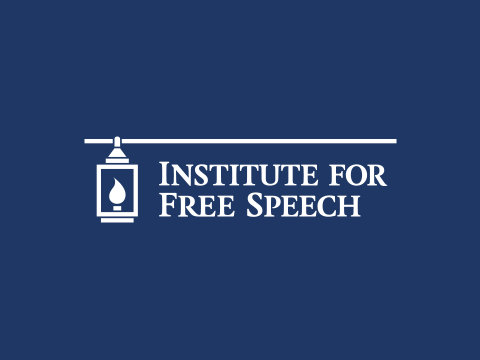You’ve got to love the editorial page of the New York Times, with its insoucient youth and humor, epitomized by its determination not to let facts stand in the way of rootin’, tootin’ good expression of outrage over campaign finance.
On Friday, the Times ran an editorial critical of an ad that the Republican National Committee has been running in Tennessee. The Times claims, erroneously, I think, that the ad’s appeal is racist. But that’s not really what I’m interested in discussing. Rather, it’s the Times’ refusal to face the reality of the campaign finance system the Times has helped to create. According to the Times, the RNC is exploiting a “loophole,” and “it takes the statuette for political hypocrisy as G.O.P. leaders insist they were hobbled by campaign law from cutting off what is clearly their own handiwork.” Really?
As Bob Bauer – no friend of the GOP – notes in his Friday blog post, the GOP is merely responding to the law. Reformers many years ago wrote a law limiting the ability of political parties to contribute directly to, or to coordinate their activity with, candidates. Further, the reform organizations have fought successfully in the Supreme Court to preserve that law against Constitutional challenge – Federal Election Commission v. Colorado Republican Federal Campaign Committee (“Colorado II”), 533 U.S. 431 (2001) – and in Congress against efforts to repeal or raise the coordinated spending limits. However, the Supreme Court has also held that parties have a right to spend unlimited sums of “hard money” if they do so independently of their candidates. Colorado Republican Federal Campaign Committee v. Federal Election Commission (“Colorado I”), 518 U.S. 604 (1996). The Court held that this was so because spending funds, once they have been raised in legally limited amounts, does not lead to corruption. Is a constitutional ruling by the Supreme Court a “loophole?” Would the Times call New York Times v. Sullivan, allowing newspapers much more leeway to get away with libel than was previously the case, a “loophole?”
In any case, the result is that political parties and their supporters in fact must spend independently of their candidates if they are to engage in meaningful political activity. And, as Bauer points out, the reformers have often touted this as a blessing of the law, a means to reinvigorate the parties. But the result is that both major parties have established independent units to make these independent expenditures. Their candidates cannot be involved, because that would be illegal “coordination.” And even the party hierarchy, having established the independent unit within the party, cannot control the content of the ads or where and when they air, because that too would be illegal “coordination.” The Times doesn’t like this, but they might at least concede that it is, according to the Supreme Court, constitutionally mandated.
And if they really had a sense of decency, they would admit that they have been cheerleaders for that system and those Court rulings. While the Times was not happy with that part of the 1996 decision in Colorado I that allowed parties to engage in independent spending, it found a silver lining in its June 27, 1996 editorial (full editorials are available on Lexis but we couldn’t find them on the web): “Most significantly, it [the Court] did not knock out limits on party expenditures that are “coordinated” with a candidate.” And almost five years to the day later, in its June 26, 2001 editorial, it praised the Court’s decision in Colorado II that limited the ability of parties to spend in coordination with their candidates:
“Justice David Souter, arguing for the majority, recognized the provision’s critical role in preventing widespread evasion of the individual limits. He thus reaffirmed an important facet of the landmark Buckley v. Valeo decision in 1976 that held that Congress was constitutionally justified in seeking to avoid corruption or the appearance of corruption of the political process.
“The decision also fits squarely with last year’s ruling in a Missouri case reaffirming the validity of the $1,000 limit on individual contributions to candidates for federal office. Yet the outcome had not been a sure thing, in part because of the court’s increasing solicitude for the First Amendment rights of political parties, combined with statements by several justices expressing dissatisfaction with the relevant laws. While the court stressed that parties remain free to make unlimited expenditures that are “truly independent” of candidates, its ruling yesterday closes a potentially huge loophole.”
In short, the Times has cheered the two ruling that leave parties to run ads independently of their candidates, and even of their party leaders. And now it expresses shock that that is actually going on. The “reform” community (perhaps better termed the “status quo” community, since their approach is always more of the same – more regulation) may not like the campaign system it has wrought. But it is the height of hypocrisy to blame it on the party leaders, who are mere victims of that system.












